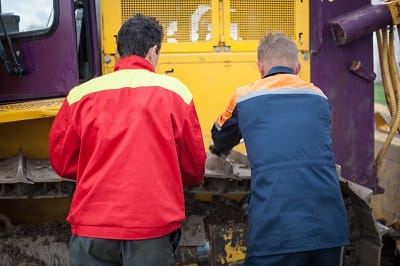
If your job involves repairs and maintenance of industrial machines in the manufacturing industry of Minnesota, you will no doubt be aware of the many hazards you face as you go about your tasks each day. Even when not active and operating, machinery poses dangers that could claim your limbs or your life. Attached energy sources like compressed air, natural gas, electricity, steam and pressurized water pose risks if there is no lockout/tagout program in place.
The Occupational Safety and Health Administration mandates that any facility with industrial equipment must have an effective lockout/tagout program. Some of the requirements might seem like overkill, but the program is not only there for your protection but also other workers — some of which might be unfamiliar with the machine.
Requirements for an effective lockout/tagout program
The goal of such a program is to prevent workers’ injuries and equipment damage by developing a step-by-step plan and sticking to it. If you see yourself as an airline pilot who has to go through the same checklist before every flight without taking shortcuts, you might prevent catastrophic injuries. Follow these steps:
- Identify equipment: Make sure that the machine you are about to lockout is the correct one, and understand its unique shutting down and restarting procedures by listing the steps in writing. Double check to ensure consideration of all the connected energy sources.
- Spread the word: Provide information about the equipment shutdown to all your co-workers who might want to use the machine. Notify them of the expected downtime, and make sure they understand the alternative procedures while the machine is unavailable.
- Shut-down sequence: Your written list must explain the shutdown process in detail with each step explaining the exact action to avoid confusion and errors that could have dire consequences.
- Disconnection of energy sources: It is not enough to flick the off switch of the machine. You must list the precise procedure for switching off every single primary energy source including compressed air, pressurized water, steam, gas, electricity and any others that might produce energy.
- Take care of secondary energy sources: Identify and list potential secondary energy sources and detail the steps to de-energize them and secure movable machine parts. Residual energy could include trapped heat or steam in the thermal system, a spring assembly’s tension, or fumes you may need to vent.
- Attach the lockout/tagout device: Now is the time to attach the lockout/tagout device to ensure that no one can turn the machine on while you do repairs or maintenance. You could switch the equipment on briefly to ensure all energy sources are inactive and verify the lockout, and if nothing comes on, you are good to go.
- Shift-change procedures: If the maintenance lasts through shift changes, make sure arriving workers know about the equipment shutdown. Ensure that you and your replacement are present when you remove your lock and that he or she attaches a lockout device when shifts change.
- Detail the restart: Before bringing the machine back on line, you must make sure that no tools or parts remain behind. Once all is clear, you must follow the sequence of steps precisely as your detailed list prescribes.
If you are one of the unfortunate employees of an employer who does not prioritize worker safety and who fails to establish lockout/tagout procedures, you will be at risk of suffering an amputation injury or worse whenever you work on equipment that could start up unexpectedly. If that should happen, you will be wise to utilize the services of an experienced workers’ compensation attorney who could help you to obtain all the compensation to which you are entitled under applicable Minnesota laws.

